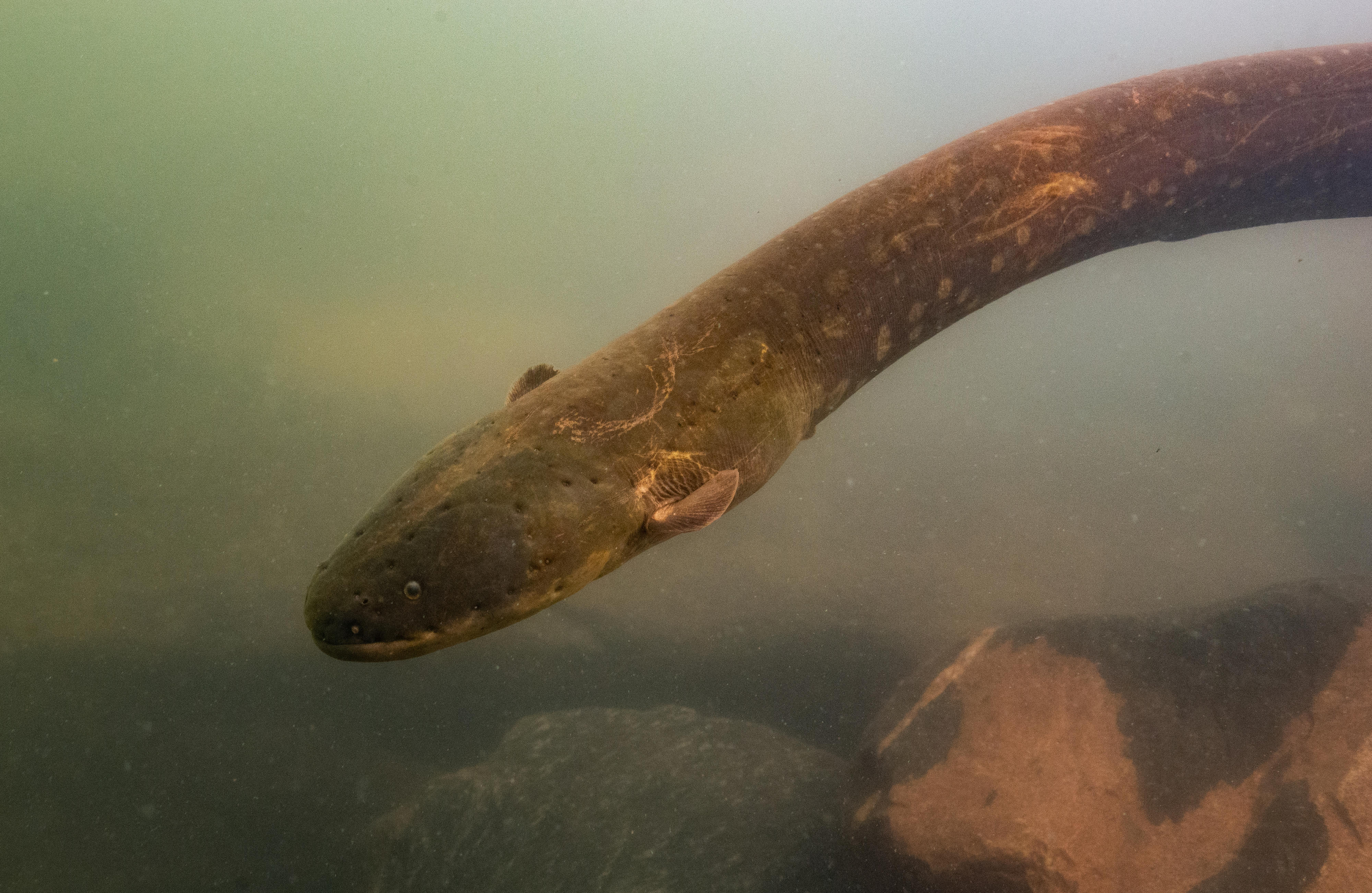New electric eels produce quite a shock
Embargoed until:
Publicly released:
2019-09-11 01:00
In a shocking discovery, international researchers have found two new species of electric eel – one of them capable of generating a bigger electrical discharge than any other known animal. Scientists have known about electric eels for more than 250 years, but always assumed these stunning eight-foot-long fish belonged to a single species. The discovery that the eels belong to three distinct species highlights how much remains to be discovered in the Amazon rainforest, and how important it is to protect.
Journal/conference: Nature Communications
Link to research (DOI): 10.1038/s41467-019-11690-z
Organisation/s: Smithsonian Institution, USA
Funder: C.D.S. is grateful to Herbert R. and Evelyn Axelrod Chair in Systematic Ichthyology funds in the Division of Fishes, National Museum of Natural History of the Smithsonian Institution, a National Geographic grant from the Committee for Research and Exploration (#9519-14), Thematic grant from the São Paulo Science Foundation-FAPESP/Smithsonian Institution (#2016/19075-9), Conselho Nacional de Desenvolvimento Científico e Tecnológico Fellowship, CNPq (#245622/2012-8), CodonCode Aligner license grant, and Global Genome Initiative Grant (GGI-Peer-2017-149). Additional support from NSF DEB-1146374 to W.G.R.C., NSF DEB-1257813 to M.H.S., CNPq Edital Universal grant to C.Y.N. (# 475013/2012-3), Conselho Nacional de Desenvolvimento Científico e Tecnológico Fellowship, CNPq (#170009/2015-7) to W.B.W., and (#155877/2018-6) to T.F.T, and Instituto Chico Mendes de Conservação da Biodiversidade grant to R.N.M.J. (#006.016).
Media Release
From: Springer Nature
1. Zoology: New electric eel species produces quite a shock *IMAGES*
Two new species of electric eel, including one with an electrical discharge much higher than previously reported, are described in Nature Communications. The recorded discharge of 860 V from the newly identified species Electrophorus voltai makes it the strongest living bioelectricity generator to date.
The electric eel was first described 250 years ago. However, due in part to their size and specialized electricity-producing morphology, it has been assumed that electric eels comprise a single species, Electrophorus electricus, distributed throughout Greater Amazonia.
C. David de Santana and colleagues examined 107 specimens of electric eel from across Greater Amazonia to determine whether they comprise a single species. Using data on mitochondrial and nuclear DNA, morphology, and geographical and ecological distributions, the authors conclude there are three common species of Eletrophorus — E. electricus, E. voltai and E. varii. Based on their analysis they suggest that the three species occupy different regions, with E. electricus found in the Guiana Shield, E. voltai in the Brazilian Shield and E. varii in the lowland Amazon basin. They also found that E. voltai can produce an electric discharge of 860 V, well above the previously cited 650 V for Electrophorus.
The authors suggest that sequencing and comparing the genomes of these species could provide insights into the origins and structures responsible for the generation of high-voltage electric discharges.
Attachments:
Note: Not all attachments are visible to the general public


